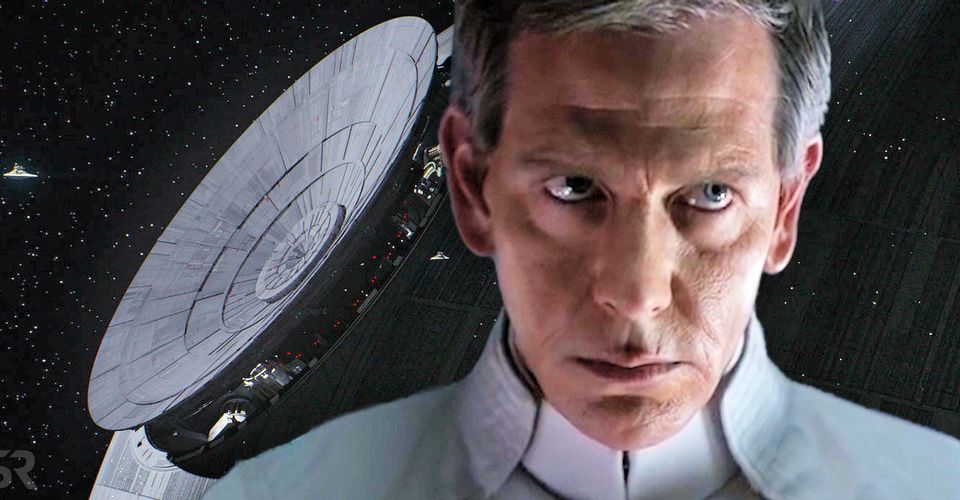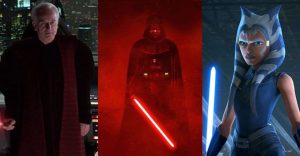Star Wars Fully Explains Why The Death Star Took 20 Years To Make

Star Wars has fully explained why the Death Star took 20 years to make. The Empire’s greatest super-weapon, the Death Star was actually in the works long before Palpatine even officially founded the Empire. The initial plans were recovered from the Separatists in Star Wars Episode II: Attack of the Clones, and the tie-in novel Catalyst revealed that this was a deliberate gambit on Palpatine’s part. He was able to argue that the Separatists were presumably working on a Death Star themselves, creating a phantom “arms race” in which the Republic began to secretly construct the first Death Star over the skies of Geonosis.
And yet, when it comes to the Death Star nothing quite seemed to proceed as the Emperor had planned. The super-weapon took over 20 years to complete – and, of course, was destroyed on the very day it was finally ready to be unveiled to the Galaxy. It hardly seems to be an example of Imperial efficiency – and, little by little, Star Wars tie-ins have explored all the problems.
The first issue was that the Death Star was a project of unprecedented scale. Dubbed “Project Stardust,” the Death Star program demanded the bulk of an entire galaxy’s resources. What’s more, it did so at a time when the Empire was placing an ever-increasing demand on these resources, with Palpatine pushing a whole host of other experimental technologies such as Interdictor Cruisers, Imperial Star Destroyers, and TIE Defenders. That meant Project Stardust was constantly competing with other priorities. Making matters worse, the shroud of secrecy surrounding the Death Star meant only the upper echelon of the Empire even knew where these resources were going, and supply networks had to be ridiculously complex.

Palpatine’s whole approach to government didn’t help either; the Emperor enjoyed playing people against one another, and as a result those who benefited were skillful at political maneuvering rather than project management. The Death Star’s construction was ultimately overseen by Orson Krennic, and the scale of his incompetence has gradually become clearer. In Timothy Zahn’s novel Thrawn: Treason, one group of rogue Imperials were able to steal vital resources from the Death Star project for three years without Krennic knowing, even when the thefts led to Project Stardust running further behind schedule.
Meanwhile, not all of the Imperial leadership was persuaded of the wisdom of the Death Star project. Some considered it an expensive folly, resenting the resources that were invested in Stardust rather than in their own ideas. The aforementioned thefts were orchestrated by Imperial Grand Admiral Savit, who successfully stole turbolaser batteries from Stardust in order to distribute them across the Imperial fleet. Meanwhile, Darth Vader himself seems to have been almost jealous of the Death Star, envying the fact that it would supersede him as the Empire’s greatest weapon. As a result, in Darth Vader annual #2 he took steps to sabotage the construction; when Vader learned that the pacifist Galen Erso’s experiments with Kyber Crystals were essential to developing the battle station, he had a droid leak the Empire’s destructive plans to Erso.
As revealed in both James Luceno’s novel Catalyst and the Rogue One: A Star Wars Story movie, Galen Erso proved to be the Death Star’s secret nemesis. He was the galaxy’s sole expert on Kyber Crystals, and when Erso and his family fled, the whole project ground to a halt. Krennic eventually tracked him down and forced Erso to resume his work, but Galen’s loyalties were never with the Empire. He used Krennic’s own administrative weaknesses against him, ensuring Project Stardust kept running late. The Rogue One novelization, by Alexander Freed, reveals that Erso purposefully manipulated Krennic himself into signing off on the Death Star’s infamous exhaust port, ensuring that the battle station had a weakness that could ultimately be used to destroy it. By that time, Krennic had become convinced that Erso was the only one he needed, and he’d gone so far as to kill off all other prominent scientists who’d contributed to Project Stardust, figuring doing so reduced security risks. This approach ensured there was nobody left alive who could have understood Erso’s treachery, and as a result Orson Krennic had sealed the Death Star’s fate.
- Star Wars 9 / Star Wars: The Rise of Skywalker (2019)Release date: Dec 20, 2019
About The Author


















